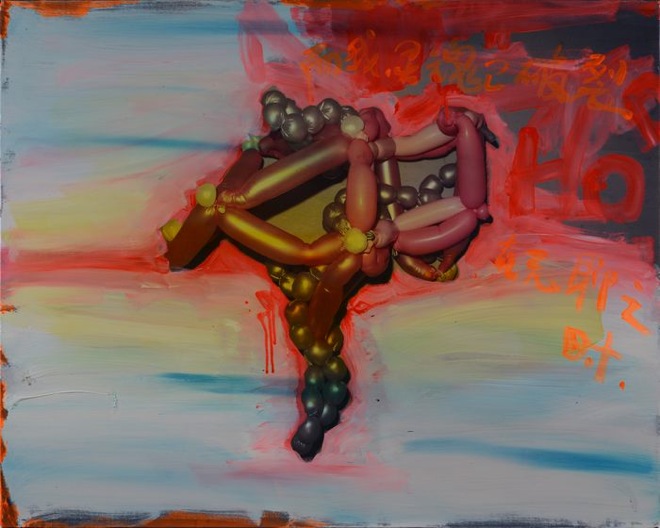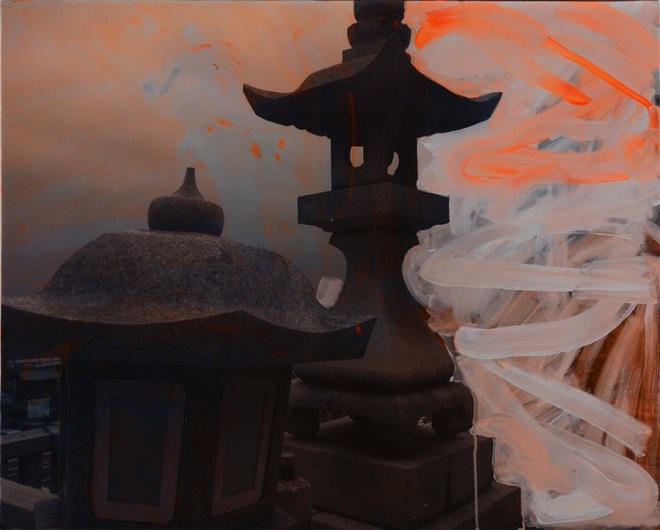
Yang Shu, “Untitled No.19”, Acrylic and Oil Pastels on Digital Printing, 80×100cm, 2014
杨述,《无题 No.19》,数码喷绘、丙烯、油画棒,80×100 cm,2014
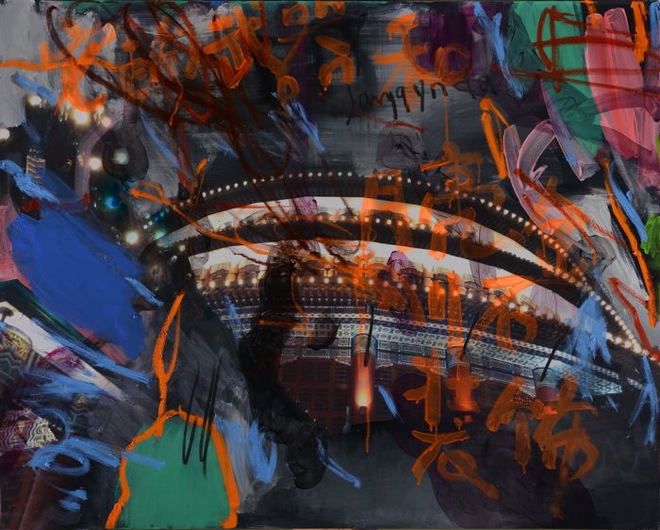
Yang Shu, “Untitled No.18”, Acrylic and Oil Pastels on Digital Printing, 80×100cm, 2014
杨述,《无题 No.18》,数码喷绘、丙烯、油画棒,80×100 cm,2014
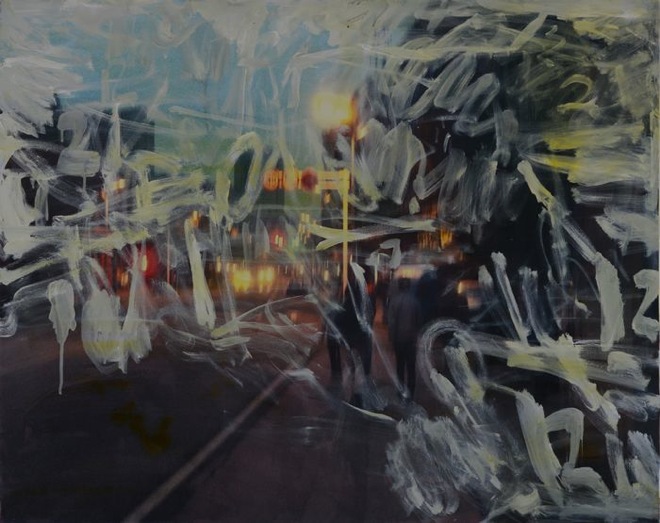
Yang Shu, “Untitled No.17”, Acrylic and Oil Pastels on Digital Printing, 80×100cm, 2014
杨述,《无题 No.17》,数码喷绘、丙烯、油画棒,80×100 cm,2014
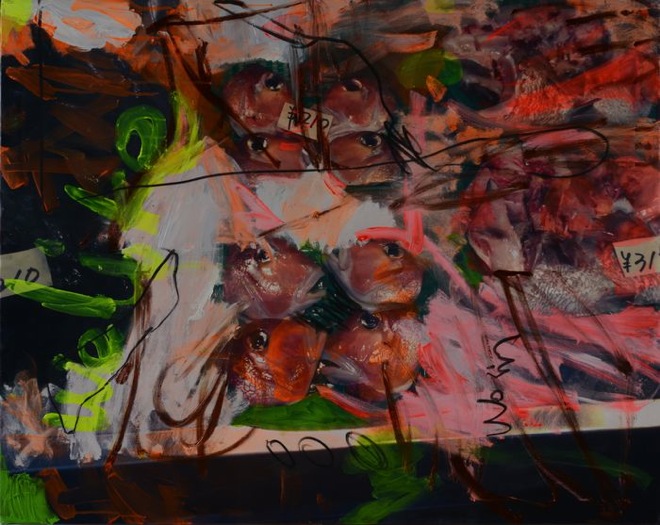
Yang Shu, “Untitled No.15”, Acrylic and Oil Pastels on Digital Printing, 80×100cm, 2014
杨述,《无题 No.15》,数码喷绘、丙烯、油画棒,80×100 cm,2014
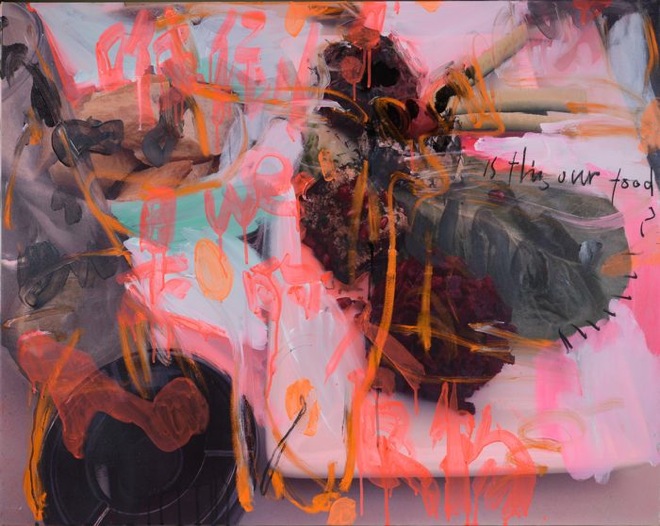
Yang Shu, “Untitled No.11”, Acrylic and Oil Pastels on Digital Printing, 80×100cm, 2014
杨述,《无题 No.11》,数码喷绘、丙烯、油画棒,80×100 cm,2014
Yang Shu (b. 1965, Chongqing) was graduated from Sichuan Academy of Fine Arts, Department of Oil Painting. He is an excellent artist who has spent 20 years on the career, his graffiti-styled expressionism painting has been known and recognized by the art scene. Among his recent works presented under the theme of “Rain & Shining”, he shows us new clues. Although they have a profound connection with his early graffiti-styled works, they were created on the basis of Yang Shu’s travel photos, as a result, they present us more figurative symbols and information. Like traveling notes, they present the fragmented feelings in a more fragmented way. As a result, Yang Shu’s consistent doubt and damage to the themed concept and narrative is revealed. He always presents the possibility of painting in an unexpected way, and conveys his idealist faith.
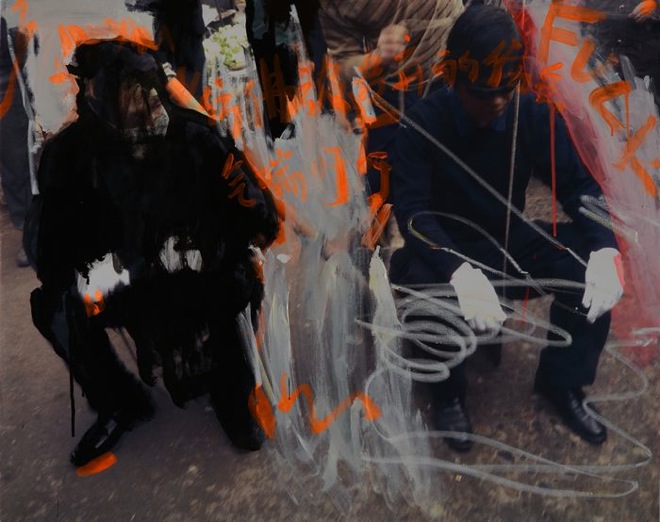
Yang Shu, “Untitled No.10”, Acrylic and Oil Pastels on Digital Printing, 80×100cm, 2014
杨述,《无题 No.10》,数码喷绘、丙烯、油画棒,80×100 cm,2014
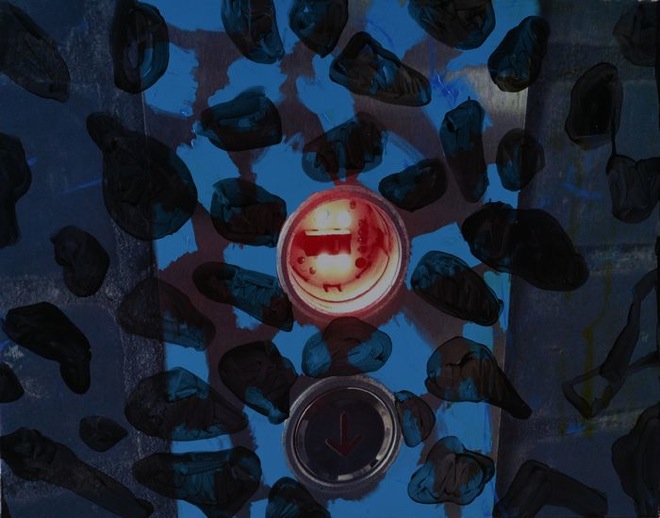
Yang Shu, “Untitled No.14”, Acrylic and Oil Pastels on Digital Printing, 80×100cm, 2014
杨述,《无题 No.14》,数码喷绘、丙烯、油画棒,80×100 cm,2014
Yang Shu’s “Bad” Journey[1]
By Xu Sheng
In this exhibition, Yang Shu presents a series of special works. They are closely related to his early woks which were closed to graffiti, but were created on the basis of his travel photos. They are like some traveling notes, which present the fragmented feelings in a more fragmented way. As a result, the wrapped core is revealed, that is, Yang Shu’s consistent doubt and damage to the themed concept and narrative.
Yang Shu always rebels against orthodoxy. He resists popular tastes as much as his own creation. He pursuits freedom in painting while overthrowing his habit of freedom with forever new perceptions. Thus we have to talk about “bad painting”. Eva Badura-Triska has given a comprehensive description on bad painting, the following is a part of it:
But let us begin by establishing what we are not talking about here. Fist, it almost goes without saying that it’s not about showing pictures that are “actually bad.” Not that this never happens in museums, but the notion of doing so deliberately, as a concept—for whatever reason—is bound to quickly end up on thin ice, even if it is motivated by sociocultural or historical interests(as, for example, in the case of fascist painting). Such an approach cannot but lead to the many-facetted and banal question of the relative nature of value judgments such as “good”and “bad,”a broad and ultimately irresolvable issue that we certainly won’t be dealing with here.
Second, we are not talking about “bad subject matter,” the choice if evil, incorrect, nasty, or ugly motifs—at least not primarily, because, as we will see, Bad Painting of the kind we are talking about here actually often goes hand in hand with “bad subject matter.”
Third, we are not talking about those works resulting from an “aesthetic of ugliness,” including the numerous artistic position of the twentieth century that aimed to widen the circle of what is acceptable by emphasizing aesthetic qualities until then unjustly dismissed as negative, pointing to the “beauty” in things and human products previously considered ugly or “not worthy of art,” the kind of intention associated in the field of painting withb Art Brut, among others.
And finally, we are not talking about those many twentieth-century position that went beyoud painting by attacking, exceeding, or abandoning easel painting and with it “painting as a whole,”before criticizing or at least focusing attention on it from outside (i.e., using other artistic means) and stigmatizing it as “bad.”. [2]
In short, bad painting is based on exploration on paintings. It ignores tradition and avant-garde, figurative and abstraction, while facing the core of the arts with deep and even anachronistic reflections. It always antipathetic to all formed or completed concepts of any times. That’s why it turns to be “bad”.
Artists who have really created “bad paintings”, would firstly be considered that they had encountered failure, instead of gaining recognition in creation. For Example, Rene Magritte has been famous for his surrealism paintings. However, after 1940, he had once defined the necessity of surrealism development, because it had already changed into a steady and lifeless formula. As a result, he began to take a new look at impressionistic painting. He believed painters should back there and rediscover the possibility of painting. He learned from Pierre Bonnard, has created a series of impressionistic works. For this purpose, he had once drew the line at surrealism, while his new works were considered worthless in Paris in 1940, he was considered as a loser who was abandoned by surrealism. In the end, it is said that under stress of his wife’s requirements of supporting the family, he got back to the trace of surrealism. Another representative artist of “bad painting” is the American abstract expressionism artist Philip Guston. He found expressionism had become a formula and a means seeking sympathy from the market. So he got back to figurative painting and created a series of works represented by Ku Klux Klan image. Those works of him were considered worthless at that time, he was also considered as an artist who had run out of ideas. His works hadn’t been admit until many years later, when people thought his works had really inherit the free spirit of abstract expressionism… Rather than part of art history, bad painting is a loose unity of the most audacious works that wander out of the history. Its badness decides that it can’t be defined, but only be bordered by new cases. Bad painting has never been deliberately inherit, but could only be weekly scattered from corner to corner of history, like the stars of rainy night.
In this point, Yang Shu’s spirit of bad painting—if he agrees with it—is not inherited either. He has been influenced by European expressionism. What he’s absorbed is not the technique or concepts, but the spirit of never compromising to popular esthetics. Bad painting always doubts about beauty and the effectiveness of transmission. It attacks them as hard as possible while still believing in it. Bad painting is against idealism, but does have ideals in painting, so are Yang Shu’s paintings. Today, it’s meaningless to search for bad painting, but its spirit always opens the gate to infinite. Only Yang Shu himself knows that where he will go after stepping into the gate. He may prove that his works today are not his final gesture and limit.
In today’s China, the concept of “bad painting” is still being misunderstood and misrepresented. Yang Shu doesn’t mention the relationship between his works and bad paintings, because he knows about the real bad painting spirit, which means the real rebel and exile, instead of any related performance. In fact, Yang Shu is always traveling in an unlimited world, and telling us what kind of independence and freedom an artist could have.
——————————————————
[1]: Partial content of this article was quoted and revised from an article of the author completed in 2011: “Yang Shu and the spirit of Bad Painting”.
[2]: Translated from Eva Badura-Triska,Bad painting, good art, Dumont, 2008

